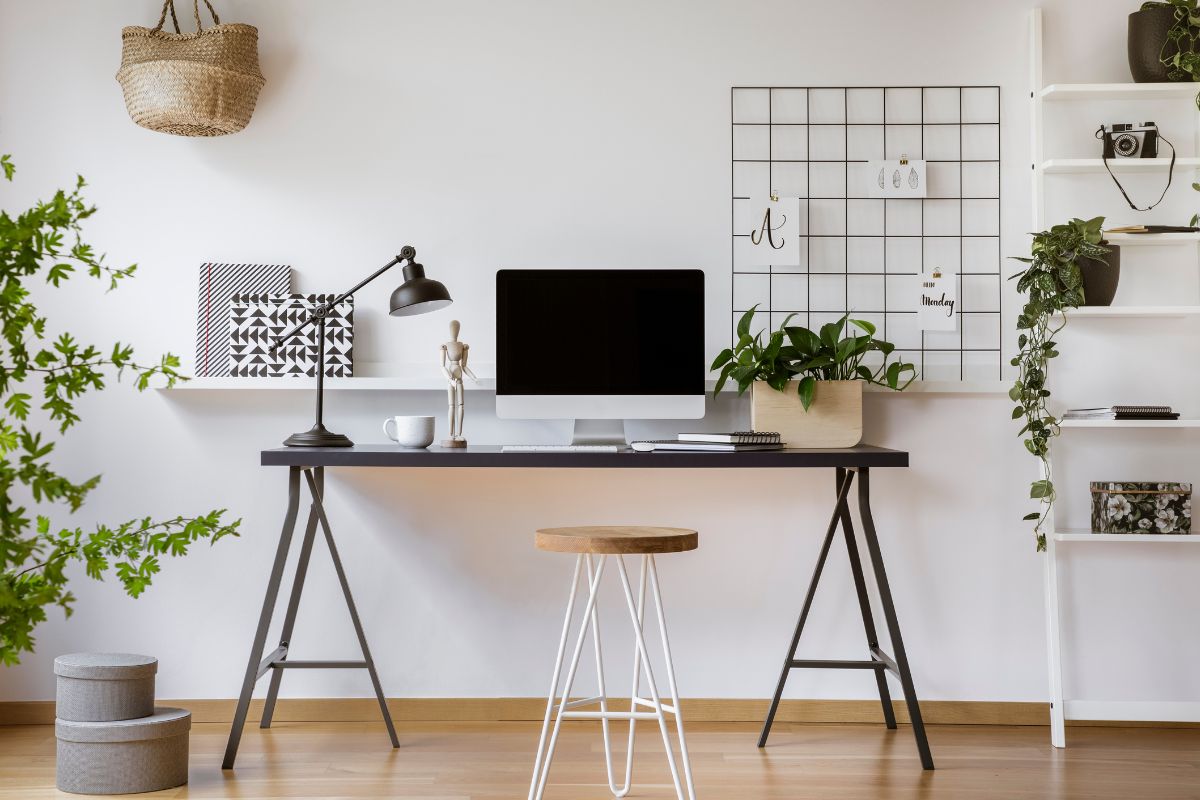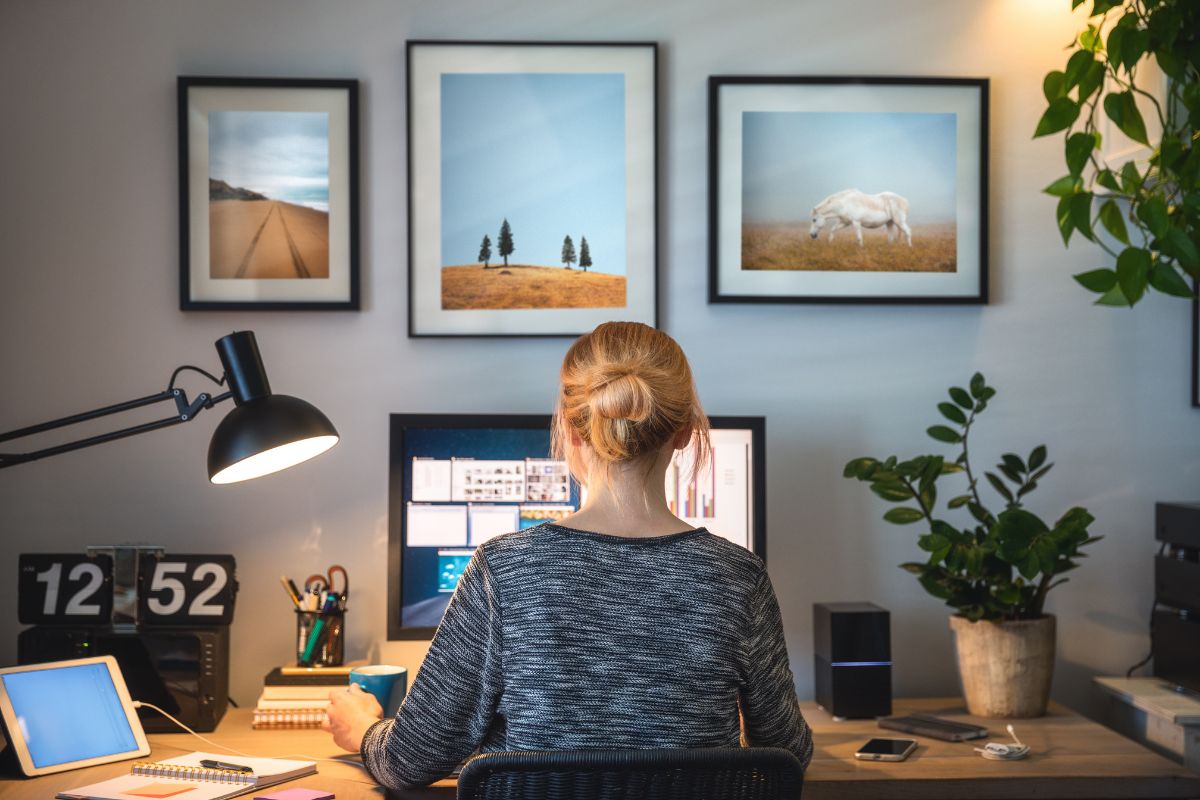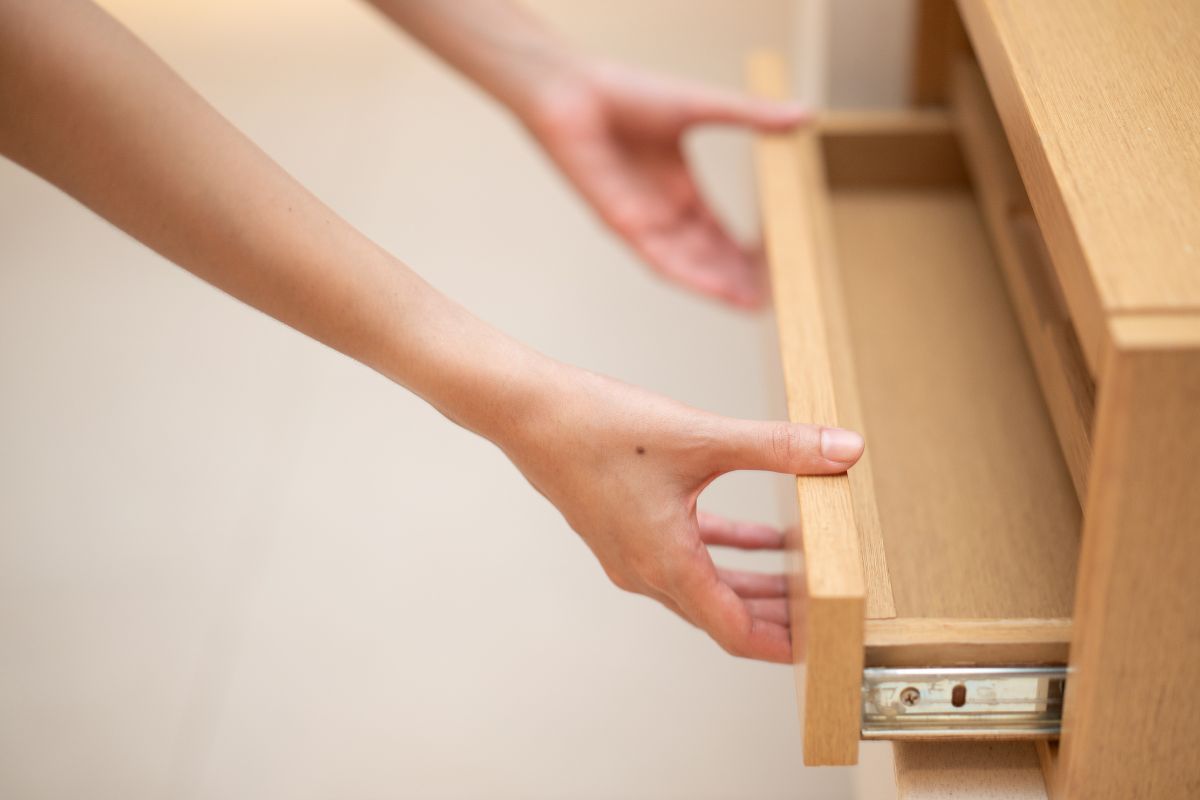Working from home has become part of everyday life for many people, whether through freelancing, full-time remote working or a hybrid role. Now that this flexible work setup has become a permanent solution for countless workers, many seek a “proper” home office where they can work comfortably and be their most productive.
Setting up a home office means creating a dedicated space where you can work productively without distraction — a space you can decorate and furnish however you like. If you’re thinking of creating your own home workstation, here are some ideas to help you do it right and get more out of remote working.
1. Find a Location That Works for You
The first step to successfully setting up a home office is figuring out where it’ll be. If you already have a spare room that can be turned into an office or adapted into a multifunctional area, this will probably be the best option for you, but if you’re short on space, there are still ways to make it work.
A home office doesn’t have to be a whole room. For some people, it’s a corner in the living room or a small nook under the stairs. Think about how you could rearrange your existing space, and don’t be afraid to get creative to find a solution.
2. Create an Environment That’s Inspiring
No matter the size of the home office you’re working with, it’s essential to make it a space that inspires you. A Stanford studyfound that working from home increases productivity by 13%, but if you want to benefit from a boost in performance, you’ll need a home workstation you can thrive in. Curate your dream workspace by incorporating colours, textures and décor that inspire you and make you feel excited to get to work.
3. Invest in High-Quality Equipment
When kitting out your home office, investing in high-quality office furniture could make all the difference. Although it may be tempting to go for something cheap and cheerful, you’ll likely find that the cheapest furniture is uncomfortable or needs replacing within a year or two.
Well-crafted pieces are designed to last and will save you money in the long run, as well as ensure all-day comfort so you can always do your best work.
 Creating a home office is an investment in yourself, and you deserve a space that makes you feel positive and productive.
Creating a home office is an investment in yourself, and you deserve a space that makes you feel positive and productive.4. Create an Ergonomic Home Workstation
Working at a desk for long hours can impact your health in several ways. A survey by the Health and Safety Executive (HSE) found high prevalences of ill-health symptoms in display screen equipment (DSE) users, with office workers reporting headaches (52%), neck pain (47%) and back pain (37%) among other complaints. If you’ll be spending a lot of time in your home office, it’s worth creating an ergonomic workspace that promotes positive health and well-being.
Investing in the right equipment is an excellent place to start — an ergonomic office chair will provide back support and help you maintain good posture, while an ergonomic desk sits at an appropriate height and provides enough space for your legs to fit comfortably beneath it. The most comfortable home offices may also feature an ergonomic keyboard and mouse or a monitor riser to ensure your screen is at a comfortable height.
5. Adjust Your Setup
As well as investing in the right office equipment, there are also some adjustments you can make to your setup to ensure your home workstation is comfortable. Experiment with the placement of your monitor, chair and desk height to maintain good posture and stay pain-free throughout the working day, being mindful of the following:
- Your spine should be in a neutral position with your head vertical to your neck.
- The top of your monitor should be at eye level or just below.
- Your monitor should be slightly tilted and positioned roughly an arm’s length away.
- Your shoulders should be relaxed, with forearms parallel to the floor and arms positioned at a right angle to your desk.
- Your chair should provide lumbar and elbow support.
- Your feet should be positioned parallel to the floor — use a footrest if necessary.
In addition to remembering these tips for good posture, another thing that will keep pain at bay is to keep moving. It’s proven that regular movement benefits spine health, which is why you should take a short break every 20 or 30 minutes to stand up and stretch a little. Standing desks are another excellent way to encourage movement throughout the day, with adjustable functionality that allows you to easily switch between sitting and standing and find the perfect height for a comfortable day’s work.
 Unsure what height your desk should be? Check out our helpful guide.
Unsure what height your desk should be? Check out our helpful guide.6. Maximise Space
Even if your home office is compact, there’s a way to make it work. Start by purchasing a desk that will maximise the space you’re in, such as one of our standing desks for small spaces, which will fit neatly into the most limited of office areas. Store documents digitally to reduce the need for filing and clear out any distractions or unneeded furniture to create an efficient and visually-appealing workspace.
7. Consider Storage Solutions
No matter what size your workspace is, one of the best home office ideas is investing in intelligent storage solutions to keep things organised. Drawer dividers will enable you to store multiple supplies in one place, while vertical storage will save on precious floor space and provide plenty of room for your office essentials.
 Check out our range of office storage solutions here.
Check out our range of office storage solutions here. 8. Get the Lighting Right
Good lighting is essential in any home workstation to avoid straining your eyes. If possible, setting up your home office near a natural light source is a great idea, as academic researchsuggests this can make you feel more alert and reduce the risk of headaches. Using natural light is also beneficial for the environment and can make you feel more productive.
If natural light isn’t possible or you need to work in the evening, a desk lamp is vital to help you maintain optimal performance. An LED task lamp will provide targeted lighting where you need it, while an indirect light will create a soft glow.
9. Make Sure You’ve Got High-Speed Internet
Setting up a home office requires high-speed internet, especially if you’ll be attending regular video calls or transferring large files. If your current internet connection is slow or patchy, upgrading to a high-speed WiFi package will make remote working an easier and more enjoyable experience.
 High-speed WiFi is essential when working from home, especially when a large portion of your day is spent on video calls.
High-speed WiFi is essential when working from home, especially when a large portion of your day is spent on video calls.10. Keep It Clutter-Free
Depending on your job, you may require access to various supplies such as files, stationery, multiple monitors or a printer. Keep these things in mind when planning your new office space and make sure you’ve considered how your workstation will be organised. As well as thinking about storage, you may also want to invest in cable management solutions to keep your workspace neat and tidy.
Ready to create a comfortable home office you’ll love? Start with our flexible ergonomic standing desks. Our high-quality desks will keep you happy and active at work, plus they come with an incredible seven-year warranty for peace of mind. Need additional help? Get the most out of your desk with our top tips for using a standing desk.
Date Published - 04/01/2023
Date Updated - 22/12/2023

